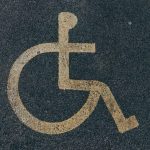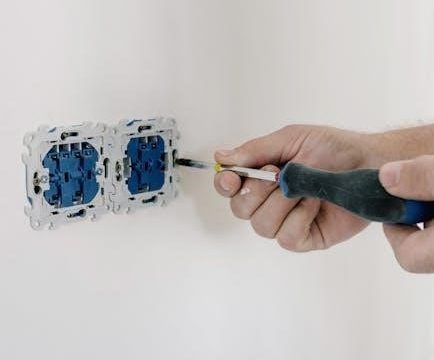Manual lymph drainage is contraindicated during acute inflammation caused by infections or toxins, as it may worsen the condition or spread infection.
Active malignant tumors are a contraindication due to the risk of spreading cancer cells through the lymphatic system during the treatment.

Patients with severe heart failure should avoid MLD, as it can overload the circulatory system and exacerbate cardiac dysfunction.
MLD is contraindicated in cases of liver cirrhosis with ascites, as it may disrupt fluid balance and worsen abdominal swelling.
Individuals with kidney disease should exercise caution, as MLD may strain renal function by increasing lymphatic flow.
Systemic cancers or metastases require careful evaluation, as MLD may potentially disperse cancer cells throughout the body.
Patients with hyperthyroidism or arrhythmias should avoid MLD, especially on the neck, due to risks of aggravating these conditions.

Absolute Contraindications
Manual lymph drainage (MLD) is contraindicated in certain conditions where the treatment could pose significant risks. Acute inflammation, such as cellulitis or erysipelas caused by bacterial or viral infections, is an absolute contraindication, as MLD may worsen the infection or spread it further. Malignant tumors are also contraindicated due to the potential risk of metastasis through lymphatic manipulation. Severe cardiac insufficiency is another absolute contraindication, as MLD can overload the cardiovascular system and worsen heart failure. Additionally, hepatic cirrhosis with ascites is contraindicated, as it can lead to fluid imbalance and exacerbate abdominal swelling. These conditions require alternative treatments to ensure patient safety and avoid complications. It is crucial to consult a healthcare professional before undergoing MLD to assess suitability.
Acute Inflammation
Acute inflammation, such as cellulitis or erysipelas caused by bacterial, viral, or toxic agents, is an absolute contraindication for manual lymph drainage (MLD). During such episodes, the body’s immune response is actively fighting infection, and MLD could inadvertently spread pathogens through the lymphatic system, worsening the condition or leading to systemic complications. Inflammation often results in swollen, tender tissues that may be further irritated by manual techniques, potentially delaying healing. Additionally, areas affected by acute inflammation may be highly sensitive, making MLD uncomfortable or even painful for the patient. Therefore, it is crucial to avoid MLD until the inflammation has subsided and the condition has stabilized. Consulting a healthcare professional is essential to determine the appropriate timing for resuming lymphatic drainage. This precaution ensures both safety and effectiveness of the treatment.
Malignant Tumors
Manual lymph drainage (MLD) is contraindicated in the presence of active malignant tumors due to the risk of spreading cancer cells. The gentle, rhythmic strokes used in MLD may inadvertently disperse tumor cells into the lymphatic system, potentially leading to metastasis. This risk is particularly high in cases where tumors are located near lymph nodes or vessels. Additionally, areas surrounding tumors may be highly sensitive or fragile, making MLD inappropriate. While MLD can be beneficial for lymphedema management in cancer survivors, it should only be performed by certified therapists with expertise in oncology rehabilitation. In cases of active malignancy, alternative therapies should be explored under medical supervision to ensure safety and avoid complications. Always consult a healthcare professional before proceeding with MLD in such conditions to prioritize patient well-being.

Severe Cardiac Insufficiency
Manual lymph drainage (MLD) is contraindicated in cases of severe cardiac insufficiency, as it can increase the burden on the heart. The gentle, rhythmic strokes of MLD may enhance lymphatic flow, leading to increased venous return and fluid overload in patients with compromised cardiac function. This can exacerbate symptoms of heart failure, such as edema, shortness of breath, and fatigue. Patients with severe cardiac insufficiency require careful management to avoid further strain on the cardiovascular system. MLD should only be considered under medical supervision and with caution, as the risks of complications may outweigh the benefits. It is crucial to prioritize cardiac health and avoid treatments that could potentially worsen the condition. Always consult a healthcare provider before proceeding with MLD in such cases to ensure safety and appropriate care.
Hepatic Cirrhosis with Ascites
Manual lymph drainage (MLD) is contraindicated in patients with hepatic cirrhosis accompanied by ascites, a condition characterized by fluid accumulation in the abdomen due to liver dysfunction. MLD can disrupt the body’s fluid balance, potentially exacerbating ascites and putting additional strain on the liver. The gentle pressure applied during MLD may increase lymphatic flow, which can overwhelm the already compromised liver and lead to further complications. Patients with severe liver disease are at risk of decompensation, making it essential to avoid therapies that could worsen their condition. Healthcare providers should carefully assess the risks and benefits before considering MLD in such cases, as the potential for harm outweighs any possible benefits. Professional consultation is critical to ensure safe and appropriate management of these patients.
Relative Contraindications
Relative contraindications for manual lymph drainage (MLD) involve conditions where the therapy may not be entirely prohibited but requires careful consideration and caution. These include renal dysfunction, metastatic or systemic malignant conditions, and hyperthyroidism with cardiac arrhythmia. In renal dysfunction, MLD can increase lymphatic flow, potentially overburdening the kidneys. For metastatic or systemic cancers, there is a risk of spreading cancer cells, though this is less likely with gentle techniques. Hyperthyroidism and cardiac arrhythmias, especially when treating the neck area, may be exacerbated by MLD due to the proximity of thyroid glands and carotid sinus sensitivity. In such cases, therapy should only be conducted under medical supervision, tailoring techniques to minimize risks while maximizing benefits. Professional assessment is crucial to ensure safe application and avoid complications.
Renal Dysfunction
Renal dysfunction is a relative contraindication for manual lymph drainage (MLD), requiring caution and professional assessment. Individuals with kidney disease may experience increased strain on their renal system due to the enhanced lymphatic flow. Conditions such as nephrotic syndrome or chronic kidney failure necessitate careful consideration, as excessive fluid mobilization could overwhelm the kidneys’ capacity to filter waste. Certified therapists may adapt techniques to minimize risks, focusing on gentle, localized methods to avoid systemic overload. MLD is not entirely prohibited but should only be performed under medical supervision, ensuring the therapy does not exacerbate renal impairment. This cautious approach balances the potential benefits of MLD with the need to protect kidney function.
Metastatic or Systemic Malignant Conditions
Metastatic or systemic malignant conditions are considered relative contraindications for manual lymph drainage (MLD). The primary concern is the potential for spreading cancer cells through the lymphatic system, which could worsen the disease progression. However, in some cases, MLD may be cautiously used to alleviate symptoms like lymphedema, provided it is part of a comprehensive cancer treatment plan; Certified therapists must consult with oncologists to ensure safe and appropriate application, avoiding areas with active tumors or metastases. Gentle techniques may be employed to improve comfort without compromising medical treatment. This approach requires careful monitoring to balance the benefits of MLD against the risks associated with cancer spread.
Hyperthyroidism and Cardiac Arrhythmia
Hyperthyroidism and cardiac arrhythmia are relative contraindications for manual lymph drainage (MLD). In hyperthyroidism, MLD around the neck area may stimulate the thyroid gland, potentially exacerbating symptoms like increased heart rate or anxiety. Similarly, cardiac arrhythmias, such as irregular heartbeats, can be worsened by MLD techniques that affect the carotid sinus or vagus nerve. While MLD is not strictly prohibited, extreme caution is advised, and techniques should be modified to avoid sensitive areas. Certified therapists must assess the severity of these conditions and consult with healthcare providers before proceeding. Gentle, non-invasive approaches may still be beneficial, but prioritizing patient safety and medical guidance is essential to prevent complications.

Importance of Professional Consultation
Professional consultation is crucial before undergoing manual lymph drainage. Certified therapists assess individual conditions, ensuring safe and effective treatment while preventing potential complications from contraindications.
Pre-treatment screening is essential to identify contraindications and ensure safe manual lymph drainage. Certified therapists conduct thorough assessments, including medical history reviews and physical evaluations. This process helps detect conditions like acute inflammation, malignant tumors, or severe cardiac issues. By evaluating the patient’s overall health, therapists can modify techniques or contraindicate MLD if necessary. Additionally, assessments allow for the creation of personalized treatment plans, minimizing risks and maximizing therapeutic benefits. Regular monitoring during sessions further ensures patient safety and effectiveness of the therapy. This step is critical for preventing complications and ensuring that MLD is applied appropriately and safely.
Certified manual lymph drainage therapists play a crucial role in ensuring safe and effective treatment. They undergo specialized training to understand contraindications and apply appropriate techniques. These professionals are equipped to assess patients, identify risks, and adapt therapy to individual needs. Their expertise includes recognizing conditions like acute inflammation or cardiac insufficiency, which necessitate caution or avoidance of MLD. Certified therapists also educate patients on the benefits and limitations of the therapy, fostering informed decision-making. By adhering to established protocols and staying updated on best practices, they minimize risks and optimize outcomes. Their involvement is essential for delivering responsible and personalized lymphatic care, ensuring that MLD is used appropriately and safely for each patient. Manual lymph drainage is often integrated into comprehensive treatment plans to enhance lymphatic flow and reduce swelling. It is not a standalone therapy but works best when combined with other modalities tailored to individual needs. Manual lymph drainage (MLD) is most effective as part of a multi-faceted treatment plan. Using MLD alone may not address the root causes of lymphatic issues, such as chronic inflammation, structural damage, or systemic conditions. For instance, in cases of severe lymphedema, MLD must be combined with compression therapy, exercise, and skin care to manage symptoms effectively. Sole reliance on MLD can lead to incomplete resolution and potential progression of the condition. Additionally, MLD does not treat underlying pathologies like infections or malignancies, emphasizing the need for a holistic approach tailored to individual patient needs. Thus, MLD is best utilized as a complementary therapy within a broader treatment strategy. MLD is safe for individuals without severe contraindications, such as those with chronic swelling, post-surgical lymphedema, or mild inflammatory conditions, under professional guidance. Manual lymph drainage is most appropriate for individuals with chronic lymphedema, post-surgical swelling, or mild inflammatory conditions. It is beneficial for reducing swelling caused by lymph node removal or radiation therapy. MLD can also aid in managing chronic venous insufficiency and promoting healing in post-traumatic edema. Additionally, it is suitable for patients with mild hepatic or renal conditions, provided there are no severe contraindications. MLD is often used to alleviate discomfort from fibromyalgia and chronic fatigue syndrome. It can also support the healing process after plastic surgery or mastectomies. Furthermore, MLD is effective in managing scars, promoting relaxation, and enhancing overall well-being. Always consult a certified therapist to ensure safe and effective treatment tailored to individual needs.Pre-Treatment Screening and Assessments
Role of Certified Therapists

Manual Lymph Drainage as Part of a Treatment Plan
Why MLD Should Not Be Used as a Sole Treatment Modality

Understanding When MLD is Safe
Conditions Where MLD is Appropriate







